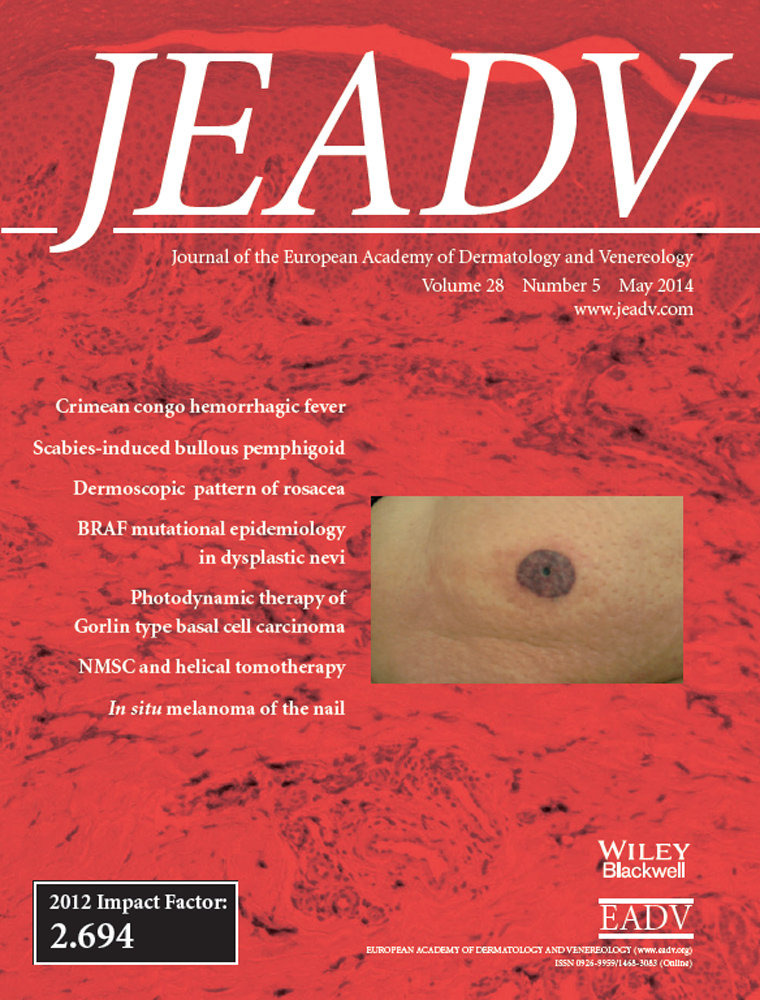The prevalence of onychomycosis in psoriatic patients: a systematic review
Conflicts of interest
Prof. Dr. PCM van de Kerkhof has consultancy services for Schering Plough, Cellgene, Centocor, Allmirall, UCB, Wyeth, Pfizer, Soffinova, Abbott, Actelion, Galderma, Novartis, Janssen Cilag and Leo Pharma. He carries out clinical trials for Centocor, Wyeth, Schering Plough, Merck Serono, Abbott and Philips Lighting.Funding sources
This project was funded by Janssen-Cilag Pharmaceuticals. Janssen-Cilag played no role in the design and conduct of the study or in data collection, data management, data analysis, interpretation of the data, manuscript preparation, manuscript review or manuscript approval.Abstract
We systematically reviewed all available literature concerning the prevalence of onychomycosis in patients with nail psoriasis and the distribution of pathogens causing onychomycosis in this specific group of patients. Databases searched were Pubmed, EMBASE and the Cochrane Controlled Clinical Trial Register. All studies reporting on the prevalence of onychomycosis in nail psoriasis were obtained, and quality assessment was determined by the STrengthening the Reporting of OBservational studies in Epidemiology checklist. Literature search revealed 720 studies, of which 10 studies met the inclusion criteria. The major limitation of the review was the heterogeneity of the included studies, which prevented the possibility to conduct a meta analysis. However, the average prevalence of 18.0% of onychomycosis in psoriatic patients seems to be increased when compared with control groups and literature on healthy population, even though the ultimate evidence remains lacking. As in the literature hypothesized shift in causative agents from dermatophytes to yeasts and/or moulds could not be confirmed. The clinical consequence of the relatively high prevalence of onychomycosis in psoriasis may be a general advice to rule out onychomycosis or concomitant onychomycosis in these patients with (suspected) nail psoriasis. This advice is stressed by the relative simplicity of treating the contribution of onychomycosis in the nail dystrophy but also the fact that nail psoriasis mostly is treated by immunosuppressive drugs, like steroids, methotrexate or biologics which may aggravate mycotic nail infections.




